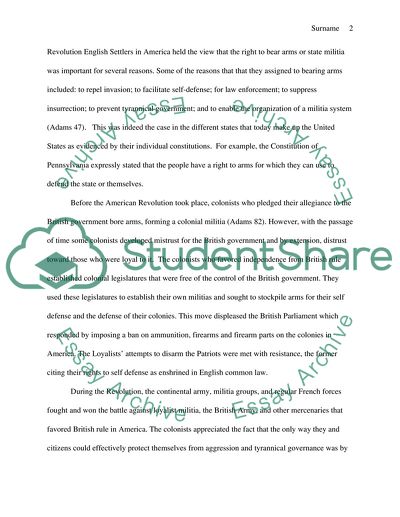Cite this document
(“Bill of Rights 2nd Amendment Essay Example | Topics and Well Written Essays - 1750 words”, n.d.)
Retrieved from https://studentshare.org/history/1637368-bill-of-rights-2nd-amendment
Retrieved from https://studentshare.org/history/1637368-bill-of-rights-2nd-amendment
(Bill of Rights 2nd Amendment Essay Example | Topics and Well Written Essays - 1750 Words)
https://studentshare.org/history/1637368-bill-of-rights-2nd-amendment.
https://studentshare.org/history/1637368-bill-of-rights-2nd-amendment.
“Bill of Rights 2nd Amendment Essay Example | Topics and Well Written Essays - 1750 Words”, n.d. https://studentshare.org/history/1637368-bill-of-rights-2nd-amendment.


